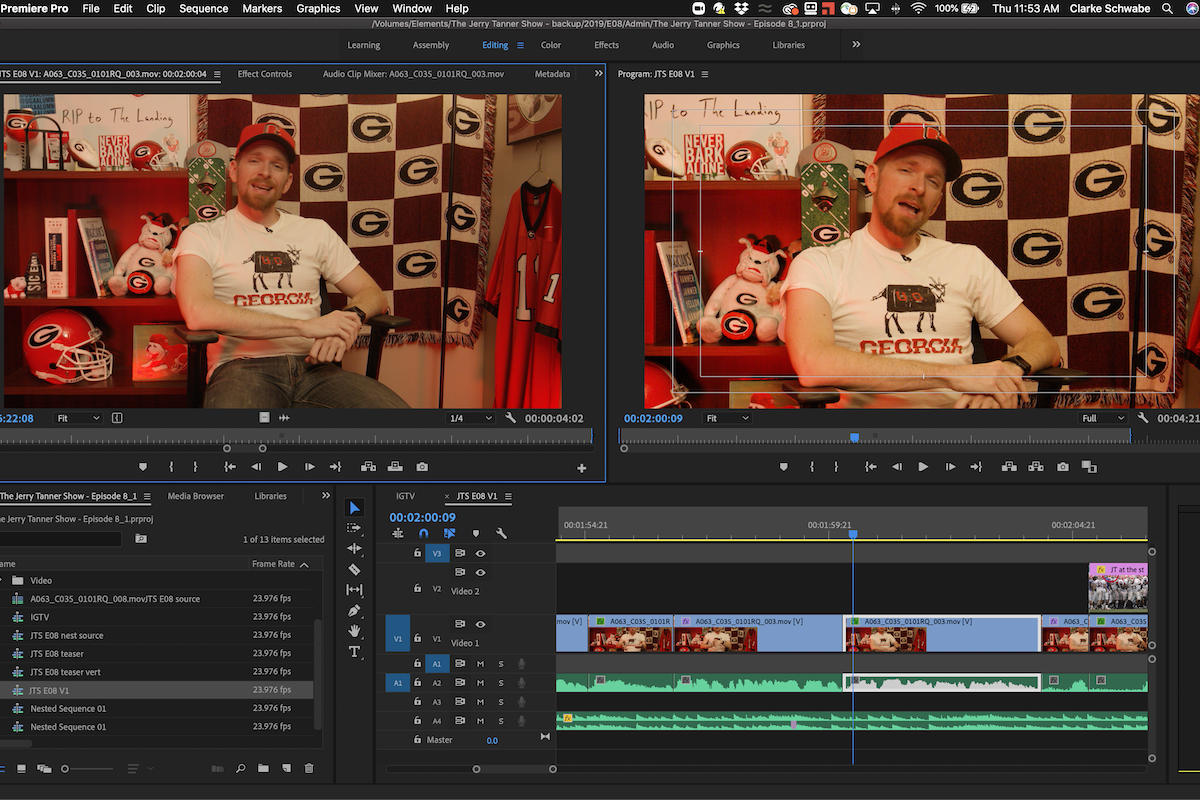The Origins of The Jerry Tanner Show
When I was hauling an office chair up the Tate Center stairs to the Sanford Drive bridge last September, sweating through a t-shirt with a goat on it, I did wonder which of my work standards this fell under.
Still working on the answer to that one. But that moment—sweaty and sucking on bus fumes while passing students stared—nevertheless stands as maybe the best indicator of why I love this job.
In the early summer of 2019, DARCOMM held a blue-sky meeting where everyone was asked to bring one big idea and pitch it to the group. Cost, time, and manpower were no object.
For months prior, I’d been working on an idea I’d had for years. It was informed by blogs like Every Day Should Be Saturday, Get The Picture and Deadspin, which seemed to understand college football the way I understood it: the last refuge for pure fun in high-level football. They treated it as both sacred tradition and exuberant frivolity in a way that somehow made sense. It was not the focus-tested, sanitized, self-serious behemoth the NFL was—it was a bunch of kids playing a game. And because these blogs recognized these underlying contradictions (and the many others inherent to college football), they felt authentic and their coverage was as much about the culture as the football.
I admired these writers and aspired to something similar. I knew enough about Georgia football and Dawg fans to know that our culture was rich and one could speak intelligently about the game and the people who made it unique without sounding like a bland, humorless news anchor.
So I pitched it: by giving an authentic character a weekly football show, we could focus on growing our YouTube subscribers with original content, we could grab the attention of alumni whose primary connection to UGA is football while slipping in a plug for the Alumni Association and we could propagate this content across all our social media channels. We wouldn’t even need that many people involved because I could write it and edit it with Edwin’s help, and it would be filmed vlogger-style: one person in one place talking to one camera.
“So who would play this guy?” was one of the first questions following my breathless pitch.
“Well… me.”
They took me up on it, and suddenly Jerry Tanner went from pipe dream to project.
In that moment and every subsequent step of creating The Jerry Tanner Show—from writing the first script, to getting buy-in from leadership, to preparing a live performance—I saw over and over again, at every level, the essence of what makes our team so effective: trust. My project meant giving the Alumni Association a public face who spoke with an accent, made jokes at the expense of other teams’ fanbases and took a lot of risks—whether I succeeded or not, I would be putting the Alumni Association’s reputation on the line.
But my colleagues trusted that I would do my homework, I trusted that they would give my ideas a fair shake and we all trusted that we were engaged in a collaborative process. Hundreds of new subscribers, thousands of views, countless goat shirt inquiries and a greenlight for season 2 tells me that we were successful, but none of it would have happened without a lot of trust.
And today, that trust has never been more important. With the entire division temporarily atomized and isolated, a tremendous amount of trust will be required by us all. But, to me, the care that has gone into finding and supporting the people of DAR and the excellent work that’s come as a result could provide no better indicator that we are equipped for this challenge.
So, although I knew last fall that wheeling an office chair into Sanford Stadium wasn’t in my job description, I also knew that my division had my back and trusted me to make that call. It was a silly moment, but it speaks to one of DAR’s greatest strengths—if not the greatest strength.
Now, if I could just get somebody to fly Jerry to Jacksonville in October…





